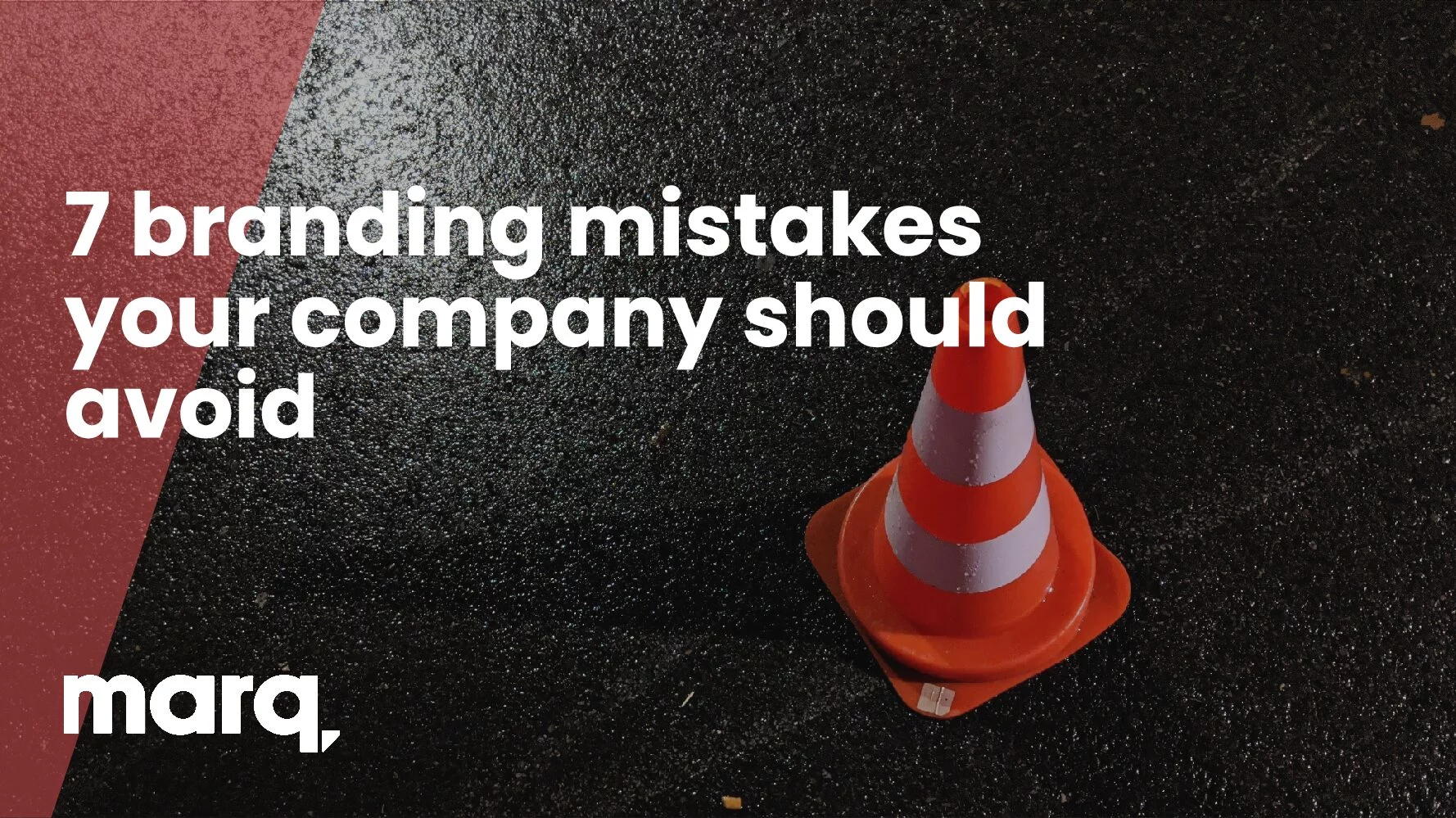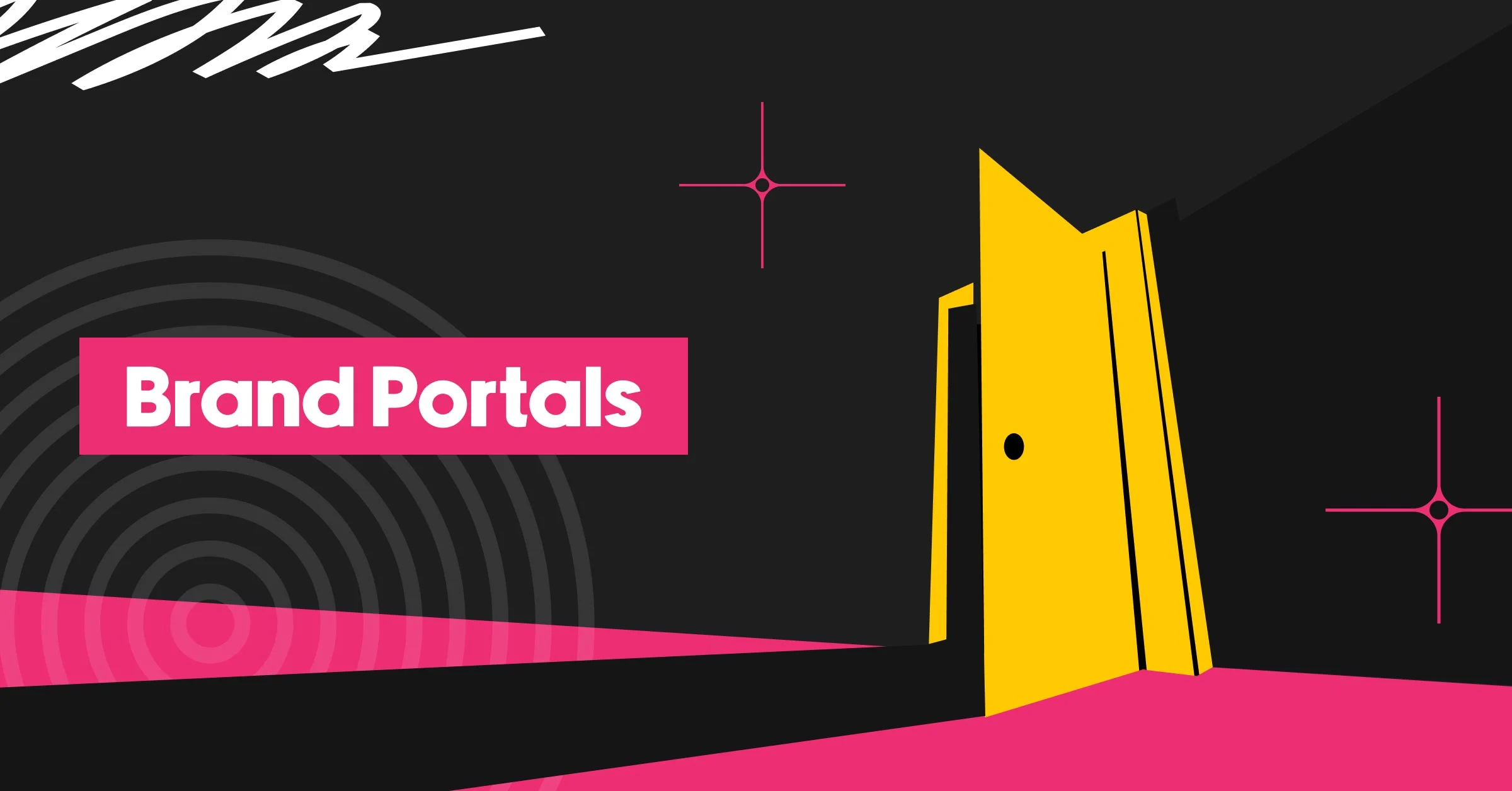Your brand is your promise, and it’s important that you build it thoughtfully and deliberately. A brand has never been successfully established by simply uploading a good-looking logo and writing a few lines on social platforms. To create a real identity, brands have to invest a lot of time and effort. There’s research to be done, competitors to be identified, and expert professionals to be consulted. Every business should learn what branding is and why it’s needed. Whether you’re starting a new business or have already established one, mistakes are unavoidable. However, here are 7 mistakes brands make that you’d be wise to avoid.
Brand management is evolving rapidly. Are you prepared? Learn more in our free eBook.
1. Failure to research the competition
This is especially important if you are a new business. Researching the competition helps you understand what established businesses in your industry have done: where they have failed, where they have succeeded and where you can give your brand an advantage. Your research should include products, services, target audiences, websites and social platforms. If you don’t, this could trip you up in two ways: first, being unable to judge the competition properly and second, replicating a competitor’s strategies without truly understanding them.
2. Failure to understand your target audience
Before you start selling or even pitching, you’ve got to understand what kind of audience you’re speaking to. You should understand their demands, their expectations, the things they identify with and the kinds of brands they favor. Once you do find your target audience, branding and messaging will get a lot easier.
3. Taking feedback from the wrong sources
Depending on the type of product or service you’re looking to sell and the market you want to cover, you’ll need to take feedback from the right sources. Limiting your sources to positive reviews won’t help you set or measure appropriate goals. Friends, family members, employees and relatives might give you positive reviews no matter what, so think before accepting reviews from them. For any modern brand, the best platform for reviews includes both social media and review sites.
4. It’s not just about logo redesign
As already stated, branding’s not just about a logo or a tagline. Branding constitutes everything that you represent—even your company’s voice and the style of content you create. You will find an audience when you have a competitive advantage and a distinct style. Without that, there’s no value!
Some companies rebrand and spend thousands of dollars on logo redesign but not enough on other brand assets. For example, an online fashion brand can’t boost sales by just changing its logo design. To build a profitable e-commerce brand, it should focus on its customer care team, product quality, advertising (both online and offline), competitive pricing, and many other factors.

Here’s a real-world example. When Marissa Mayer became Yahoo’s CEO, she decided to change the logo of the company. It made for big hype among the users, marketers, bloggers and everyone else. But when Yahoo finally unveiled its new logo, all expectations were crushed. It wasn’t terrible… but it wasn’t exciting, either. It turned out to be just a minor change that didn’t bring any significant growth to the Yahoo brand.
5. Inconsistency
Brand consistency has a tremendous impact on your business. Consistency helps build familiarity, loyalty and eventually, credibility. Be consistent with your promotions, personality, communication and every other interaction you make with your audience.

For example, Coca-Cola might just be the most consistent brand in history. Its logo has hardly changed in 130 years. Everyone recognizes its fun-in-the-sun summer campaigns and heartwarming Christmas campaigns. The brand has built such loyalty that no other soda can beat it—even when Pepsi famously won blind taste tests with consumers. Now in the digital age, Coca-Cola has built a huge audience of followers on social media, so it’s quite easy to reach its target audience wherever they may be.
6. Not focusing on first impressions
A brand with clunky design is a brand that will go unnoticed. You could have an amazing product, great messaging and outstanding customer service, but without a visually appealing presentation, people may never pay attention.
Some larger companies that gained popularity before the internet still get away with bad design, but any brand created after the mid-2000s should know better. A modern, user-friendly design will build your brand’s credibility and bolster its overall appeal.
The fix: You don’t get a second chance at a first impression, so if your brand’s design or website needs a facelift, make it a priority. There are plenty of business resources out there to help direct your efforts, as well as tools like Lucidpress that can make visual design easy and effective.
Poor customer service
Whether you realize it or not, poor customer service can be a huge detriment to your brand. People are more likely to talk about their experience with a product if the experience was negative, which is why the customer experience should be your brand’s No. 1 priority.
United Airlines had a rocky time for customer service last year, for instance, as a video of a passenger being dragged off a flight went viral in April 2017. Adding insult to injury, the CEO’s delayed response felt cold and unapologetic. These incidents caused United’s stock to drop drastically and skewed the country’s perception of this brand altogether.
The fix: Apply the tried-and-true saying: “The customer is always right.” You need to meet your users where they are, even if you have to go out of your way to do it. Examples of brands with exceptional customer service include Costco, Marriott and JetBlue. Companies that offer satisfaction guarantees, provide incentives and make up for mishaps build a strong loyal customer base.
Misusing (or not using) social media
Neglecting social media is another way to hurt your brand and diminish customer satisfaction.
A lot of social media fails simply stem from good intentions, like when Cinnabon attempted to honor Carrie Fisher with a tacky image or when Crocs tried to tribute David Bowie—both insensitivity issues that were magnified by their wide social media reach.
Other times, brands simply fail to invest enough time and money into social media efforts at all. Keeping up with various social sites shows consumers that you care about them, especially when you’re able to reply to questions and complaints promptly.
The fix: Devote actual time and resources to building a social media strategy. If you’re looking for a brand to follow, Wendy’s is a great example of social media use. With almost 2.5 million followers on Twitter, more than 8.5 million likes on Facebook and over 700,000 followers on Instagram, the brand has a consistent image, posts often and interacts with its fan base. The company’s social media team also keeps up with current events and pop culture—a great way to engage with followers.
7. Not having a Plan B
There are many businesses that think a brand is something you establish and then it takes care of itself. Today, that’s completely untrue. You should constantly refine and revise your offerings to deliver better quality and adapt to the changing needs of the market. Not all branding strategies will work the first time. In those instances, you need to be ready with a second plan to ensure that recovery is immediate.
One of the most visible examples of a brand refusing to adapt to change is Blockbuster. In 2000, Netflix’s founder approached Blockbuster offering to sell his relatively small company that rented movies online through a mail subscription service. As the popular movie store was making most of its revenue through late fees, Blockbuster turned Netflix down, unable to see the potential.
Today, Netflix continues to be a model for adapting to change as it has transitioned from mail-order DVDs to streaming, and the brand now produces hundreds of original shows and movies. Meanwhile, Blockbuster is survived by just a handful of stores in Alaska.
The fix: Listen to your consumer base. When they push for greater convenience or more options, adjust your strategy to give them what they’re asking for. If you don’t, another brand surely will. [ ]
8. Insensitivity
Insensitivity in branding is a major issue. Companies make headlines all the time for creating well-meaning ads that turn into PR nightmares. Take the Kendall Jenner Pepsi commercial debacle of 2017. Rather than striking a chord of solidarity, it left viewers either laughing at the poor execution or feeling angry at the commodification of the Black Lives Matter movement.
Another prime example of insensitivity is the Filet-o-Fish ad from McDonald’s in the U.K. The spot featured a boy asking his mom about his deceased father, only to find out the one thing they had in common was their affinity for McDonald’s. Using such a grave subject to sell fish sandwiches felt emotionally manipulative to many consumers, and the company took down the ad shortly after the backlash.
The fix: Before delving into any controversial or sensitive topics, consider how your brand fits into the issue. An honest attempt at sparking emotion in viewers can quickly turn into exploitation. Learn where to draw the line.
9. Selling the “what” instead of the “why”
A common mistake in branding is selling your company’s features rather than a big idea. As Simon Sinek says, “People don’t buy what you do; people buy why you do it.”
Sinek references TiVo as an example of a company that led with its features—being able to pause and rewind live TV—and failed to really capture its users’ attention.
On the other hand, Apple is one of the most successful brands because the company sold a big idea by telling the world to “think different” about computers. It sold a mindset and lifestyle instead of some technical specifications.
The fix: Find something you believe in, focus on that value, and build your brand around it. Coke sells happiness in a bottle. Nike sells motivation. Rather than focusing on dry, explanatory messaging, your brand should have a nearly tangible energy.
Managing a brand is not an easy thing. But you must always understand that your business is more than just its products and services. Success depends on the way you shape the experience of your customers. This is what defines your brand identity. Once you’ve established trust in your brand, you’ll never want to look back.



